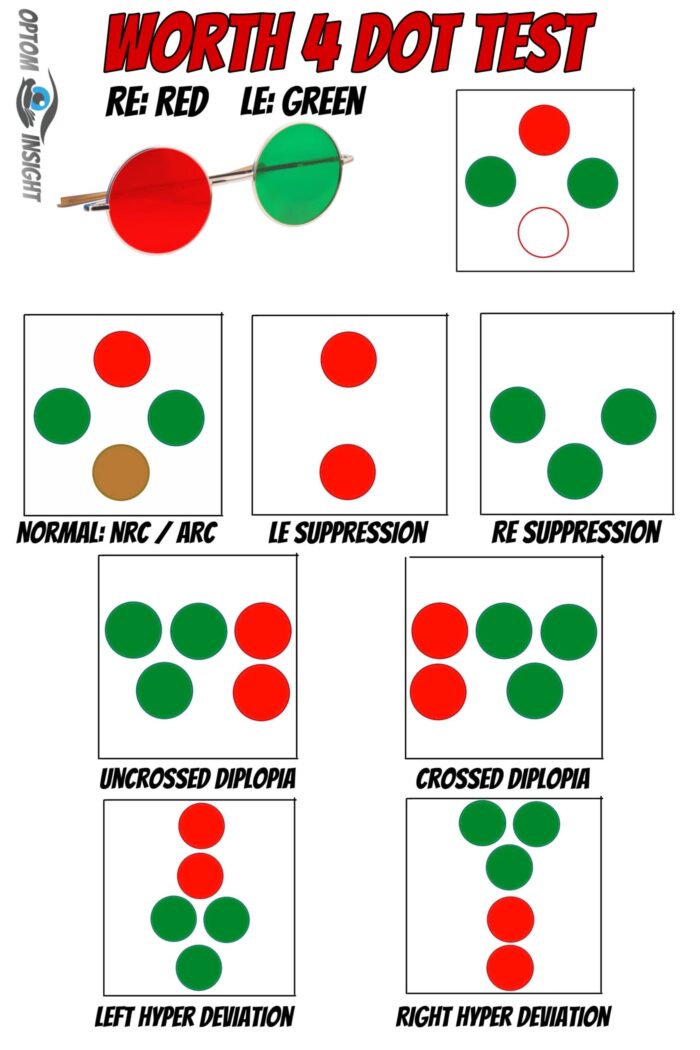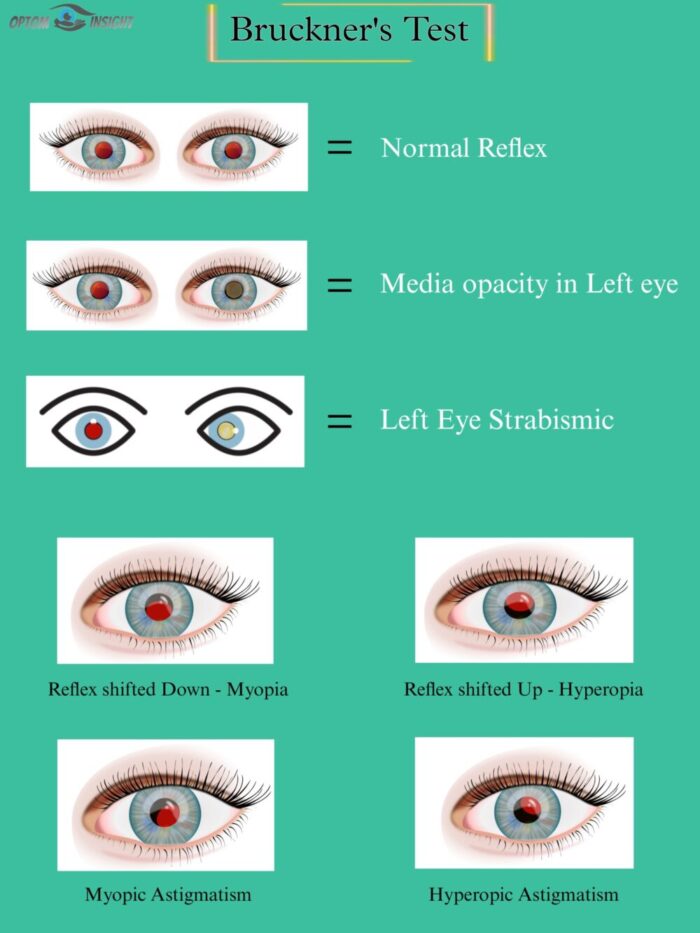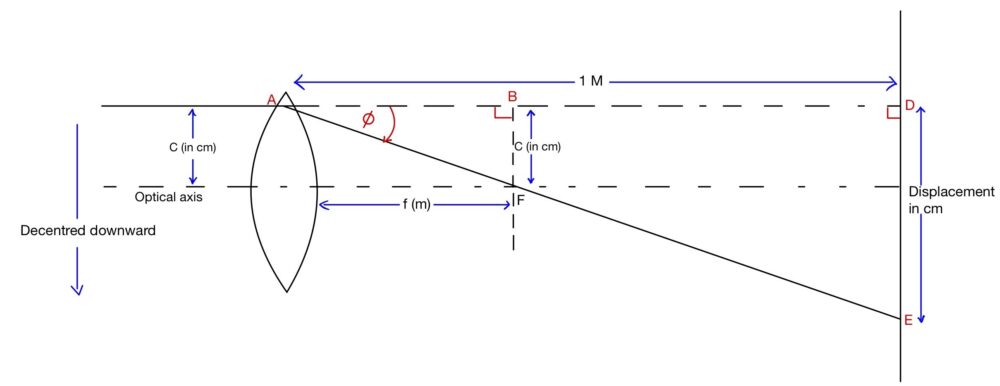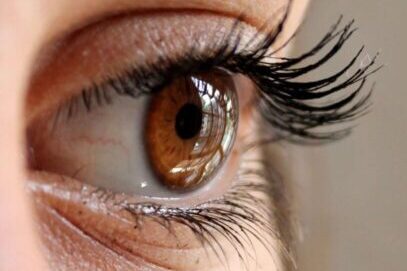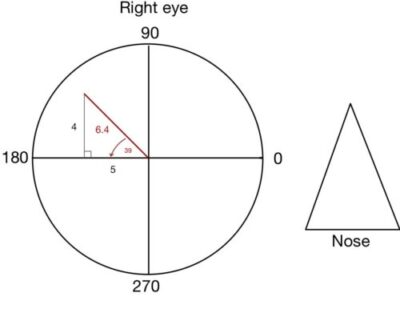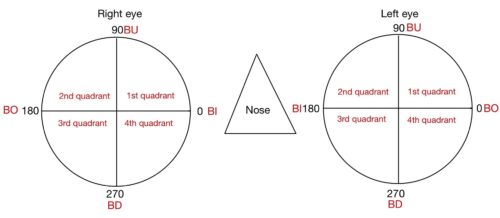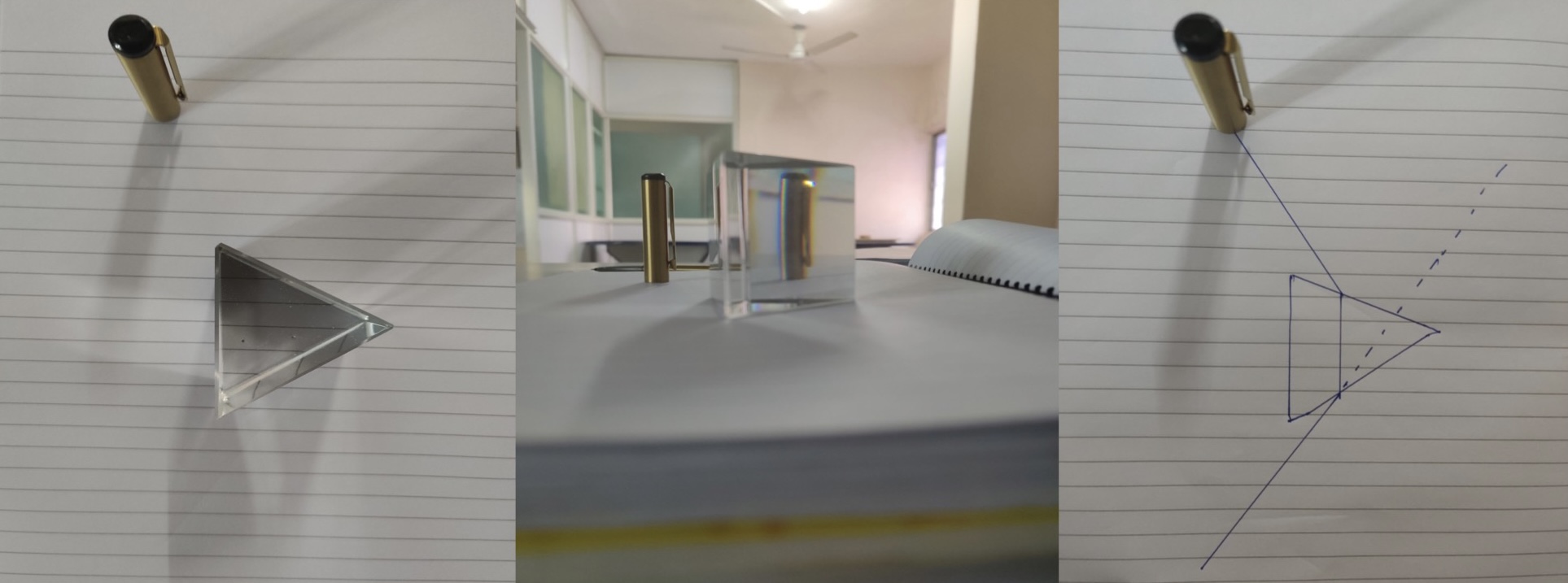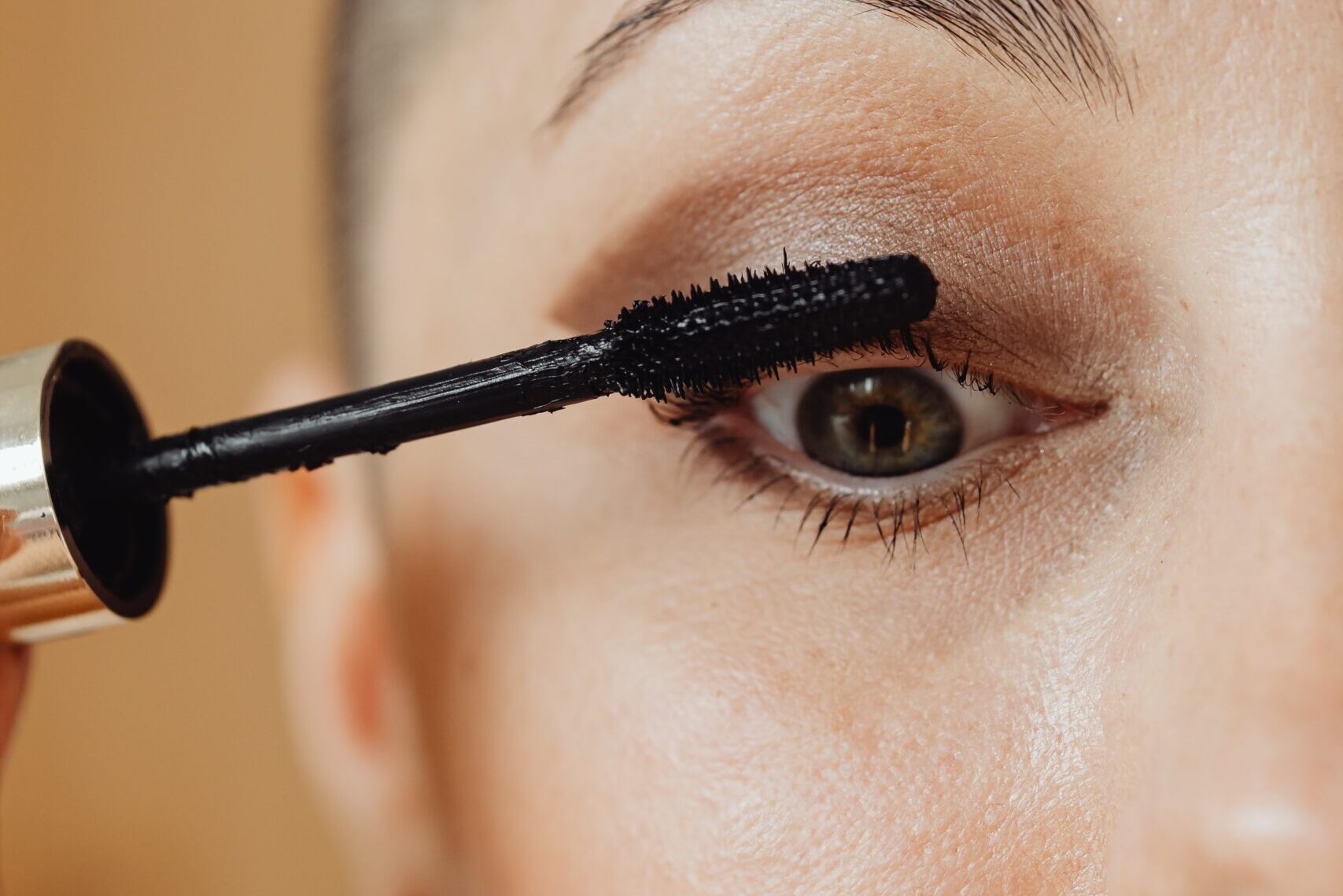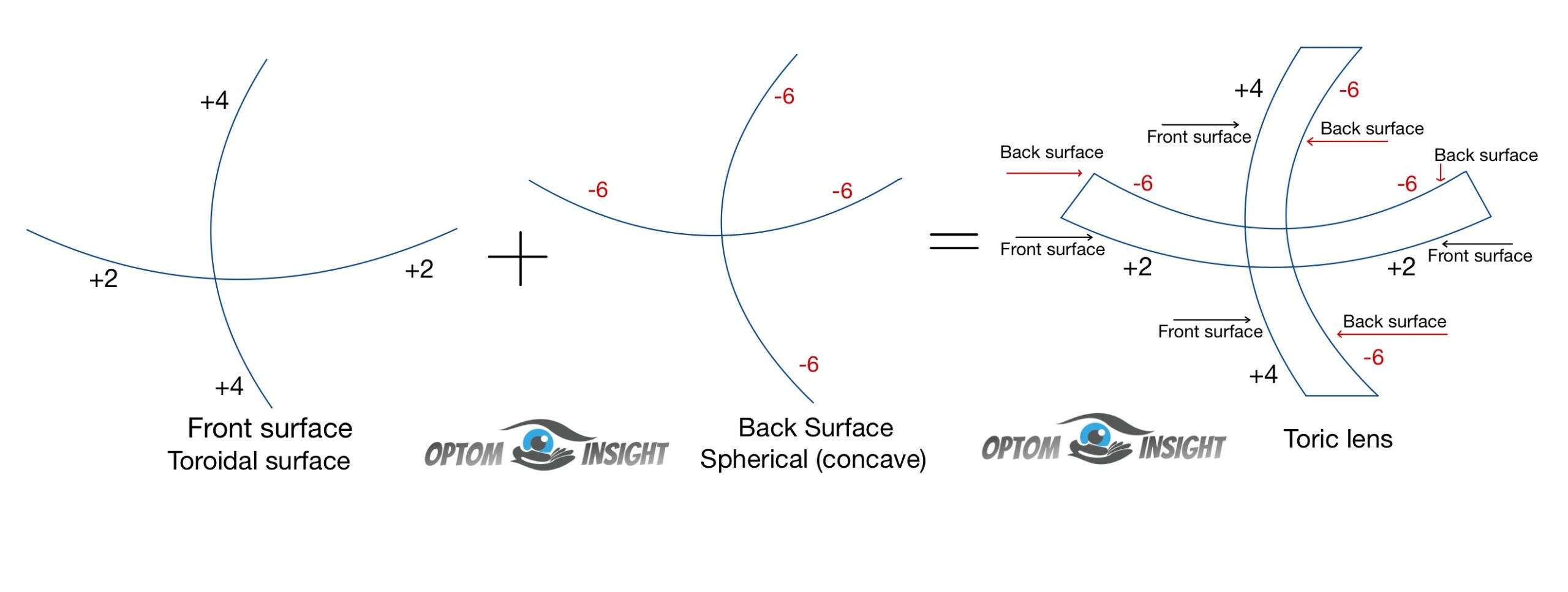Worth four dot test
Worth four dot test is a subjective procedure test to evaluate the presence of fusion, suppression, diplopia and abnormal retinal correspondence. The test can be performed for both distance and near Procedure: Ask the patient these questions Interpretation All below mentioned interpretation is for eyes when red glass is in front of the patient’s right … Read more

